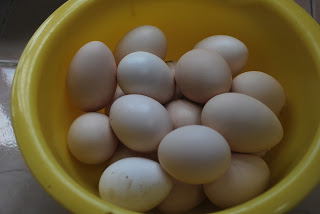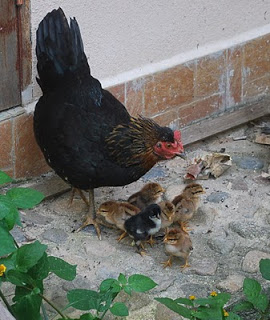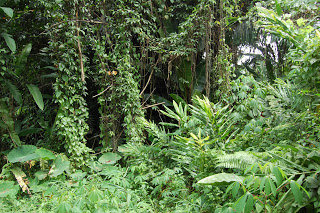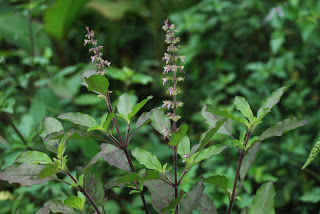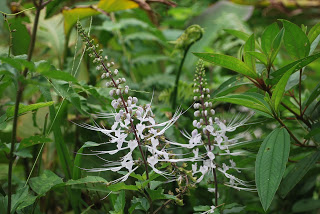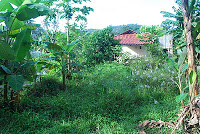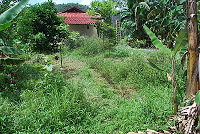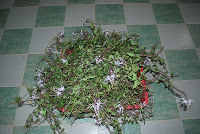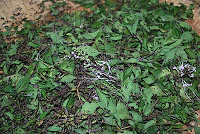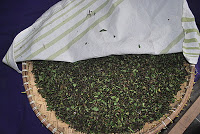Edible Landscape – Lengkuas Kecil
 One plant that I find produces beautiful orchid-like flowers with its long stem and multiple flowers on a stem is the Galangal (Malay name: Lengkuas Kecil; Botanical name: Alpinia Conchigera). This plant belongs to the ginger plant family. Locally, it is used both in culinary and in traditional therapy. This is one of the first few herbal plants that I planted at the farm and I obtained the starter plant from Hj. Hassan Awang Din who lives in Jeniang, Kedah, one of my “teachers” in the traditional herbs arena. The original source was from Gunung Jerai in Kedah. At the farm, it grows to about 1.5m tall and grows well in both semi-shady and sunny locations. The leaf is long measuring around 20cm and has a slightly waxy texture on the upper leaf surface. As with most of the plants in the ginger family, it requires substantial water and well-drained soil, not soggy.
One plant that I find produces beautiful orchid-like flowers with its long stem and multiple flowers on a stem is the Galangal (Malay name: Lengkuas Kecil; Botanical name: Alpinia Conchigera). This plant belongs to the ginger plant family. Locally, it is used both in culinary and in traditional therapy. This is one of the first few herbal plants that I planted at the farm and I obtained the starter plant from Hj. Hassan Awang Din who lives in Jeniang, Kedah, one of my “teachers” in the traditional herbs arena. The original source was from Gunung Jerai in Kedah. At the farm, it grows to about 1.5m tall and grows well in both semi-shady and sunny locations. The leaf is long measuring around 20cm and has a slightly waxy texture on the upper leaf surface. As with most of the plants in the ginger family, it requires substantial water and well-drained soil, not soggy.
 I find the whole plant adds a lot of aesthetic value to the landscape. The flowers can also be used as cut flowers and placed in a vase for indoor display. However, I prefer to leave it on the plant and enjoy its beauty as I walk around the farm. Once the flower dries up, it produces a red fruit which is used in Chinese herbal medicine. I started with one starter plant in in the course of 3 years, have managed to multiply it. I propogated it from its rhizomes. It took 6-8 months for the plant to start flowering and this is a good indicator of the presence of rhizomes that are ready to be harvested.
I find the whole plant adds a lot of aesthetic value to the landscape. The flowers can also be used as cut flowers and placed in a vase for indoor display. However, I prefer to leave it on the plant and enjoy its beauty as I walk around the farm. Once the flower dries up, it produces a red fruit which is used in Chinese herbal medicine. I started with one starter plant in in the course of 3 years, have managed to multiply it. I propogated it from its rhizomes. It took 6-8 months for the plant to start flowering and this is a good indicator of the presence of rhizomes that are ready to be harvested.
 In Malay traditional therapy, the rhizome is one of the items used in creating a bath for women post-pregnancy. The rhizome is also transformed into a paste and applied to the skin as a treatment for skin infections such as for eczema. The rhizome is also boiled to produce a concoction to treat stomach ailments and in Malay traditional therapy, to treat “angin dalam badan“. In local culinary, the rhizome is used in cooking savoury dishes such as rendang, one of the herbs in creating a marinate for friend chicken and many other dishes. To me, it has a taste of being slightly “gingery” with a touch of black pepper.
In Malay traditional therapy, the rhizome is one of the items used in creating a bath for women post-pregnancy. The rhizome is also transformed into a paste and applied to the skin as a treatment for skin infections such as for eczema. The rhizome is also boiled to produce a concoction to treat stomach ailments and in Malay traditional therapy, to treat “angin dalam badan“. In local culinary, the rhizome is used in cooking savoury dishes such as rendang, one of the herbs in creating a marinate for friend chicken and many other dishes. To me, it has a taste of being slightly “gingery” with a touch of black pepper.
So, why not plant this along the borders of your garden and you can enjoy its beauty as well as get a great rhizome to spice your cooking.

